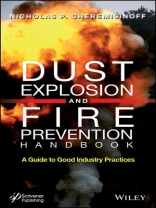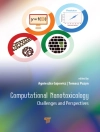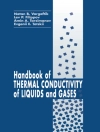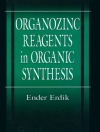Up-to-date and thorough coverage of the causes, repercussions, and prevention of dust explosions and fires by one of the most well-respected environmental scientists and worker safety litigation specialists in the world
This handy volume is a ready ’go to’ reference for the chemical engineer, plant manager, process engineer, or chemist working in industrial settings where dust explosions could be a concern, such as the process industries, coal industry, metal industry, and others. Though dust explosions have been around since the Earth first formed, and they have been studied and written about since the 1500s, they are still an ongoing concern and occur almost daily somewhere in the world, from bakeries to fertilizer plants.
Dust explosions can have devastating consequences, and, recently, there have been new industrial standards and guidelines that reflect safer, more reasonable methods for dealing with materials to prevent dust explosions and resultant fires. This book not only presents these new developments for engineers and managers, it offers in-depth coverage of the subject, starting with a complete overview of dust–how it forms, when it is in danger of exploding, and how this risk can be mitigated–as well as a general overview of explosions and the environments that foster them.
Dust Explosion and Fire Prevention Handbook covers individual industries, such as metal and coal; offers an appendix that outlines best practices for preventing dust explosions and fire and how these risks can be systematically mitigated by these implementations; and incorporates a handy glossary of terms for easy access, not only for the veteran engineer or chemist, but for the student or new hire.
This ready reference is one of the most useful texts that an engineer or chemist could have at their side. With so many accidents still occurring in industry today, this must-have volume pinpoints the most common, sure-fire ways for engineers, scientists, and chemists working with these hazardous materials to go about their daily business safely, efficiently, and profitably, with no extraneous tables or theoretical treatises.
Innehållsförteckning
About the Author xi
Preface xiii
1 Combustible Dusts 1
1.1 Introduction 1
1.2 Metrics 3
1.3 Size and Shape 6
1.4 Size Distribution 9
1.5 Why Some Dusts are Combustible 14
1.6 Common Causes of Dust Explosions and Risk Mitigation 16
1.7 Closing Remarks and Definitions 21
2 The Basics of Dust Explosions 29
2.1 Conditions for Dust Fires and Explosions 29
2.2 Primary and Secondary Dust Explosions 39
2.3 Explosions within Process Equipment 40
2.4 Other Examples of Catastrophic Incidents 52
2.5 Ignition Sensitivity 54
Recommended References 61
3 Factors Influencing Dust Explosibility 65
3.1 Introduction 65
3.2 Particle Size and Dust Concentration 66
3.3 Particle Volatility 66
3.4 Heats of Combustion 68
3.5 Explosive Concentrations and Ignition Energy 70
3.6 Classification of Dusts 73
3.7 Oxidant Concentration 75
3.8 Turbulence 76
3.9 Maximum Rate of Pressure Rise 77
3.10 Presence of Volatile and Flammable Gases 78
3.11 Limiting Oxygen Concentration 82
3.12 Important Definitions and Concepts 84
Recommended References 91
4 Explosion Prevention in Grain Dust Elevators 93
4.1 Introduction 93
4.2 Causes 95
4.3 Properties of Grain Dusts 98
4.4 Case Studies 102
4.5 Best Industry Practices 107
4.6 Osha Grain Handling Standard Audit Questionnaire 120
5 Coal Dust Explosibility and Coal Mining Operations 131
5.1 Introduction 131
5.2 Coal as a Fuel 132
5.3 Heat and Energy 134
5.4 Coal Dust Suspension, Confinement, Resuspension and Explosions 135
5.5 Processing Equipment Explosion Hazards 137
5.6 Coal Mining Operations and Safety 147
Recommended References 203
6 Preventing Fires and Explosions Involving Metals 207
6.1 Introduction 207
6.2 Combustibility Properties of Metals 208
6.3 Explosion Temperatures 215
6.4 Dry Powder (Class D Fires) 216
6.5 Case Studies 226
6.6 Good Industry Practices for Prevention and Risk Mitigation 246
6.7 Risk Screening Guidelines and Resources 265
Recommended References 272
7 Phlegmatization, Diluent Dusts, and the Use of Inert Gases 275
7.1 Introduction 275
7.2 Phlegmatization 276
7.3 Addition of Diluents 279
7.4 Application of Inert Gases 279
7.5 Case Study 289
8 Augmenting Risk Mitigation with Leak Detection and Repair 305
8.1 Introduction 305
8.2 Why Ldar Programs are Needed 306
8.3 Sources of Fugitive Air Discharges 307
8.4 Good Industry Practices 308
Appendix A: General Guidelines on Safe Work Practice 319
Glossary of Terms 349
Index 357
Om författaren
Nicholas P. Cheremisinoff is a graduate of Clarkson
College of Technology, where he received his B.Sc., M.Sc. and Ph.D.
degrees in chemical engineering. He has nearly 40 years of
industry, applied research, and international business experience
and is the author of numerous engineering reference textbooks
concerning good industry practices in the management of dangerous
and hazardous materials. He is the principal of No-Pollution
Enterprises, a firm specializing in environmental and worker safety
litigation support.












